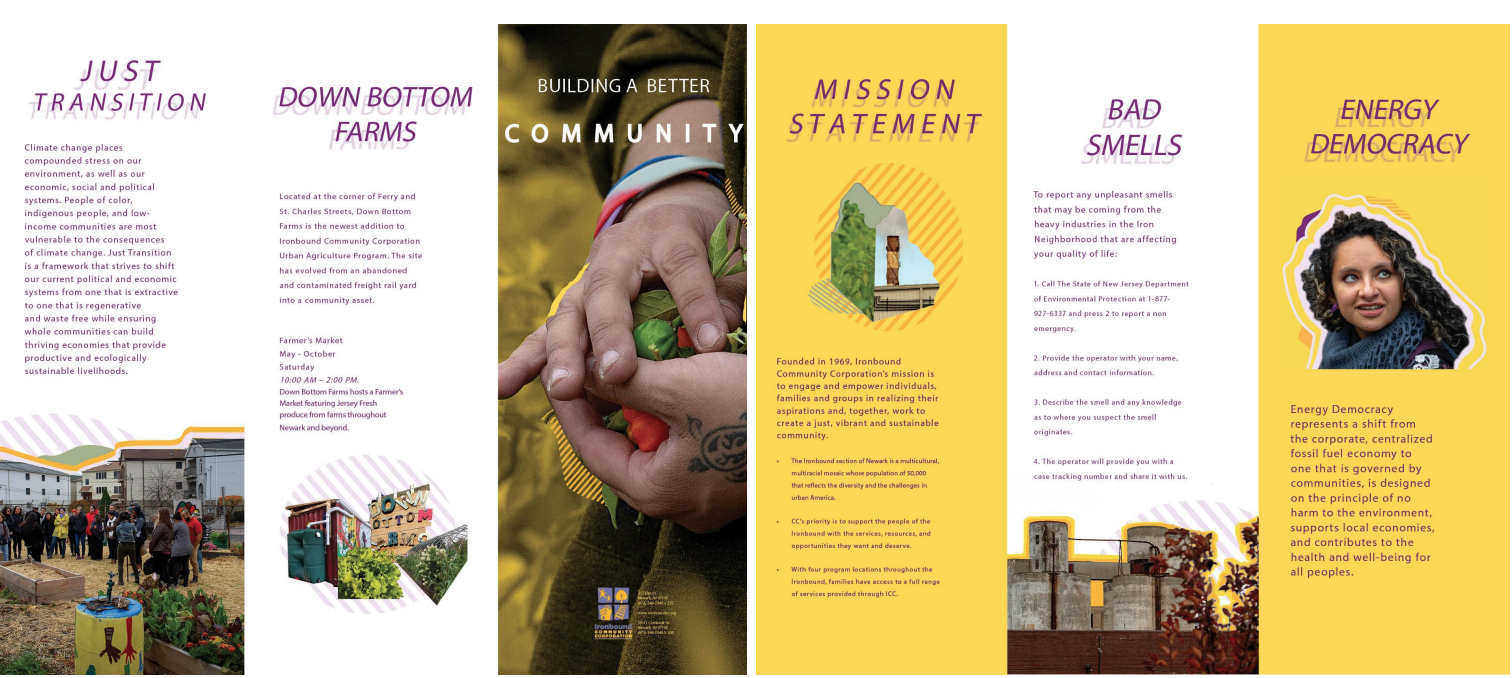Climates of Inequality: Stories of Environmental Justice
Post Written by Anastasia Standrik
Humanities Action Lab is a coalition of universities, including The New School, issue organizations, and public spaces in 23 cities that collaborate to create community-curated projects on urgent social issues. This collaboration between students and community organizations culminated in an exhibition that will travel among the participating communities for two years.
Last year, students and environmental justice organizations in those cities collaborated around the theme of Climates of Inequality: Stories of Environmental Justice. In October, the multi-media installation of their work opened in Newark and will soon go on its 20-city tour. One of the main goals of this work is to help frontline communities share their stories beyond their local areas.
The traveling Climates of Inequality exhibition opened in Newark in October and will be shown until December 15th.
The New School faculty members engaged in HAL’s Climates of Inequality Project through their courses were Ana Baptista, Chair of the Environmental Policy and Sustainability Management program and Associate Director of the Tishman Center, and Brian McGrath, Professor of Urban Design at Parsons. Students from Ana Baptista’s “Environmental Justice: Race, Class, and the Environment” class and Brian McGrath’s Architecture Design Studio partnered with Ironbound Community Corporation (ICC) in Newark to identify what ICC needed assistance with and created work in accordance with those needs.
The New School’s panel at the Climates of Inequality exhibition states: “Being in New York City, the main beneficiary of Newark’s waste and global good infrastructure, we were mindful of the interlinked scales across physical, discursive, and imagined spaces. Students considered how they are complicit in the global flows of capital that create injustice in Ironbound and how they can fight alongside groups like ICC for alternative futures.”
ICC was founded by residents of a Newark neighborhood called Ironbound in 1969 and has been an active voice for environmental justice for over three decades. The EJ brochure, designed by students of the Environmental Justice class states, “Ironbound Community Corporation’s mission is to engage and empower individuals, families, and groups in realizing their aspiration and, together, work to create a just, vibrant, and sustainable community.” Ironbound has a history of exploitation, starting with the violent removal of the Lenape people and the marginalization of communities of color and poor people, followed by the spread of toxic industrialization in the area. Today, it is both an entry point to unsustainable consumption of the region, due to its large port and logistical zones, and as a recipient of NYC’s waste. ICC’s approach to environmental justice is focused on a Just Transition to a regenerative economy and is rooted in the community’s own vision for their future, which is what the student projects aimed to highlight.
Besides the brochure, Environmental Justice class students designed a booklet describing multiple histories and narrative threads covered on the Toxic and Resilience Tour, which is one of ICC’s tools to educate, empower, and engage diverse audiences about the legacy and activism in Ironbound as well as the potential opportunities for improvement.
Students also provided research, design and policy support for the Ports Area Redevelopment Plan, which is a collaboration with the City of Newark’s Planning office and Sustainability Office as well as the Coalition for Healthy Ports.
Brian McGrath’s and Ana Baptista’s students at the Down Bottom Farm which is one of the stops on an Environmental Justice Toxic and Resilience Tour of Ironbound.
Students in Design Studio 5 developed various conceptual designs for how to address the Combined Sewer Overflows and how to re-imagine an area of vacant land as an urban sponge for flood and rainwater. Students also designed ideas for an open-air museum and created storyboards about climate, EJ, immigration, community transition stories at the Down Bottom Farm in Ironbound.
ICC imagines flood risk sites as sites of ecological restoration as part of New Jersey’s Blue Acres program, which purchases properties flooded in Superstorm Sandy. Homes on these properties have been demolished, and the land permanently preserved as open space. Students from Design Studio 5 imagined how the preserved land can be used to serve as a natural buffer against future storms and floods. (You can view the full project on their website)





